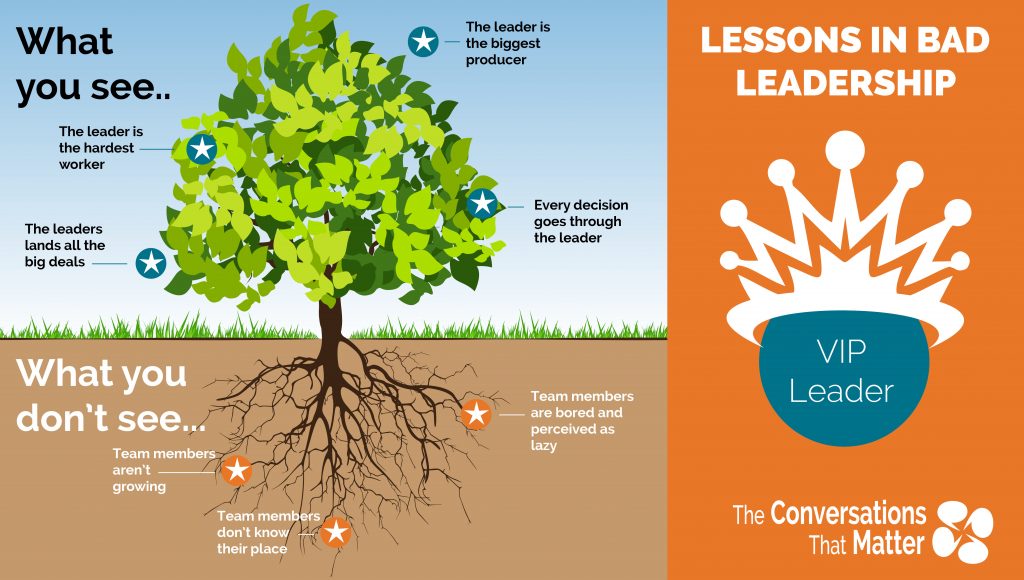
Lessons in Bad Leadership – The VIP Leader
BAD LEADER TYPE #3 – THE VIP LEADER
Fact: Good leaders keep a ship moving forward by empowering others. Bad leaders move a ship forward by doing it themselves.
Above the surface – The leader is the hardest working person in the room. She makes the most sales, does the most work for every project and delivers every single time. She is the cornerstone of every big deal and is the most reliable person on the team. She follows-through every single time.
Below the surface – The team members are weak and not sure of their place. There is nobody supporting them in their role or their professional development. They aren’t gaining skills or given opportunities to try new things. Some team members may even seem lazy on the surface because their contributions aren’t significant enough to matter, so they don’t bother to give it much effort.
Why this is bad – Leadership isn’t about being the MVP of the team. It’s about raising other leaders to do their very best work. If there is a culture that supports people, helps them grow and works toward common goals, that organization is significantly more likely to be strong and viable long into the future.
What the experts say:
In “The Work of Leaders,” the authors site a study by Teresa Amabile of the Harvard Business School. In this study, Amabile looked at what it takes for people to produce good work.
“Of the four components she identified, two deal specifically with a sense of achievement. First, people are most creative and productive when they have a passion for a task that’s interesting, involving, personally challenging, or satisfying. Second – and here’s where your leadership comes in – cultural and environmental factors stimulate creativity and productivity, such as when leaders encourage a sense of positive challenge in the work, collaboration, and the development of new ideas; and when they support innovation, give appropriate recognition, and create ways to actively share ideas across the organization. In other words, you can create an environment that leads to more effective execution. As the leader, you can instill a sense of personal and tangible feeling that each contribution is a step toward realizing a vision.”
- Work of Leaders, by Julie Straw, Mark Scullard, Susie Kukkonen & Barry Davis, pp 107-108
As a leader, how can you make sure you are balancing what you can do yourself and what you can empower others to do?
- Recognize that we are better as a team than as individuals.
- Invite input and listen well.
- Appreciate and value the gifts of those around you.
- Be open to feedback and input from team members.
- Even if you can do a task better yourself, ask if you are doing better for the team and big picture by doing it yourself or empowering someone else to do it?
If you see these traits in others, how can you invite better leadership practices?
- Model good leadership and empower others around you.
- Have a conversation with that person. Ask questions before you judge.
